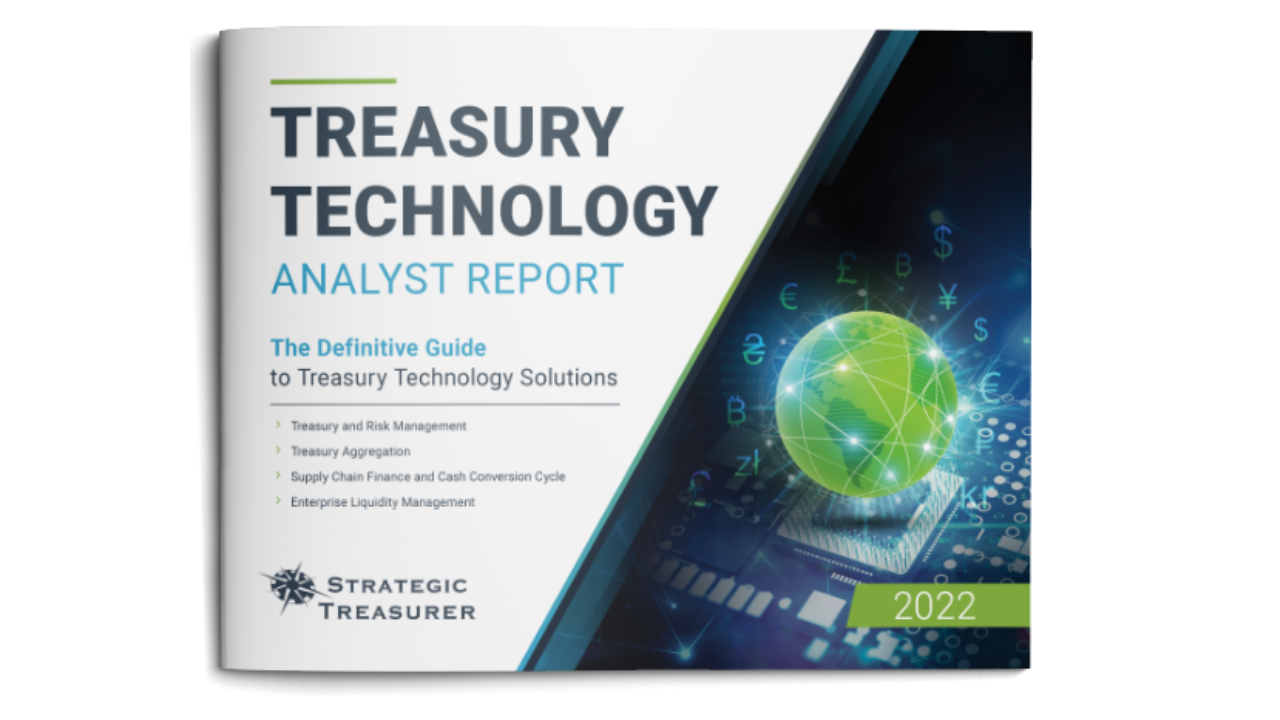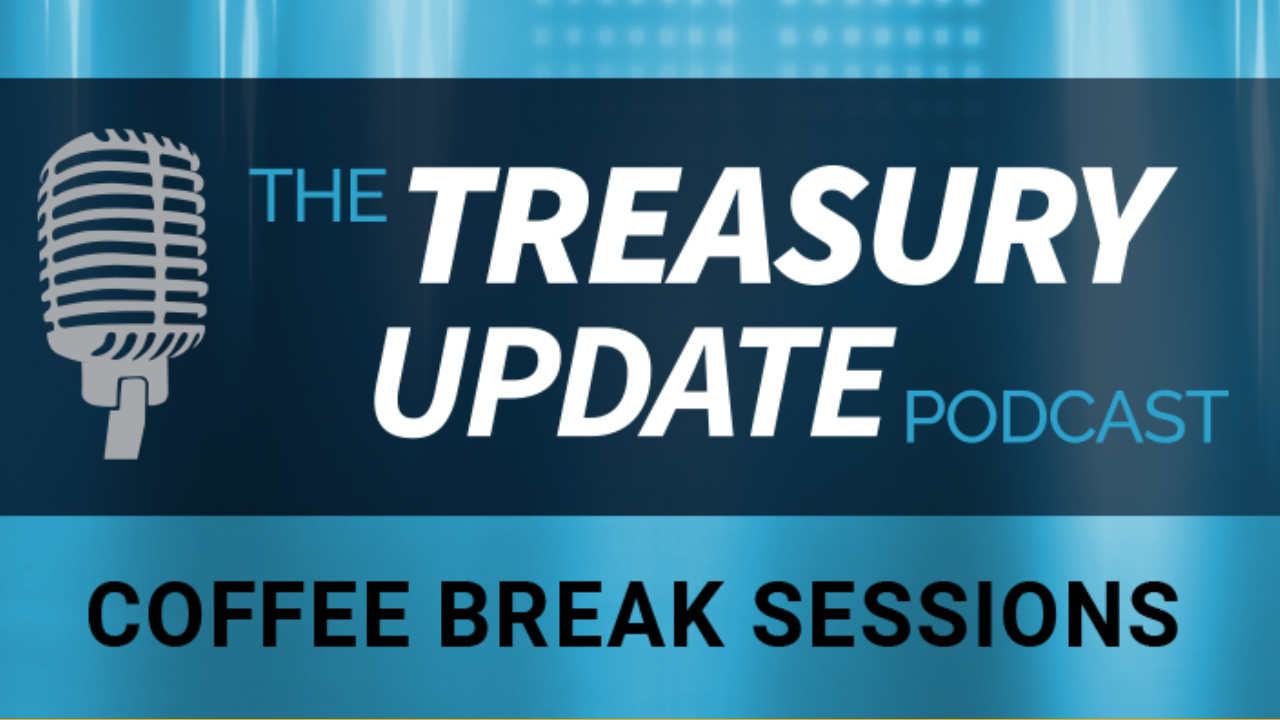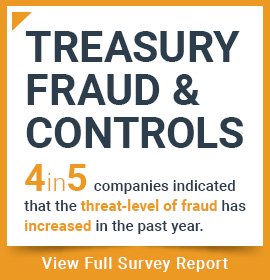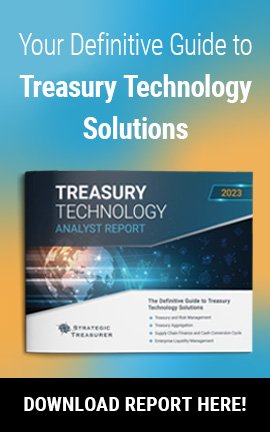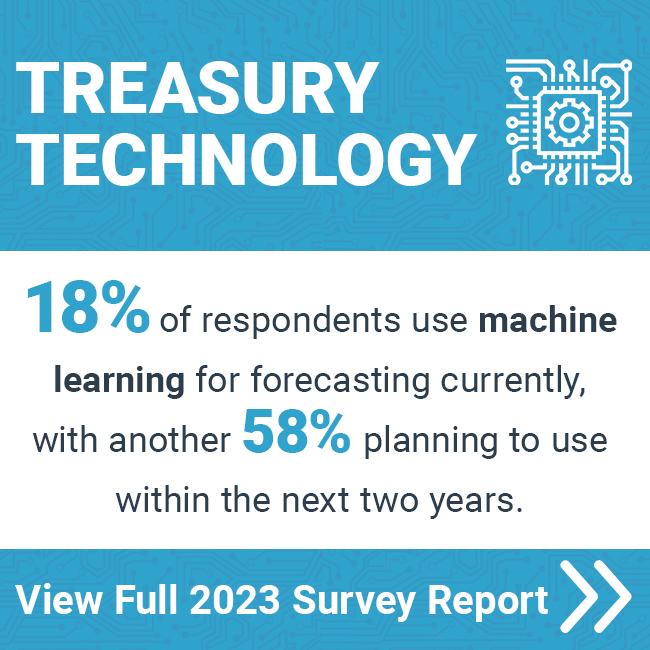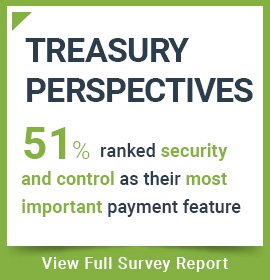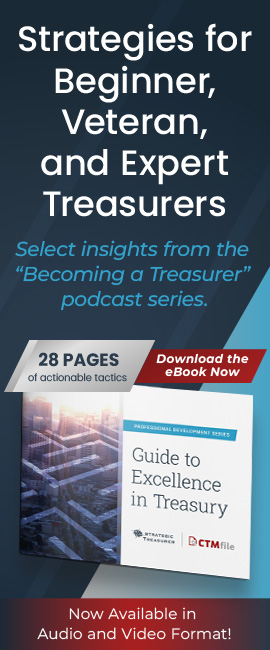
Session 76
Coffee Break Session:
What Are Stocks?
What are stocks? Coffee Break Session Host Jason Campbell catches up with Strategic Treasurer’s Senior Advisor, Paul Galloway, to discuss stocks, the different types of issuances, reasons for stock buy-back, and limitations to issuance and buy-backs. Listen in and learn a little bit about stocks.
Host:
Jason Campbell, Strategic Treasurer


Speaker:
Paul Galloway, Strategic Treasurer


Episode Transcription - (Coffee Break Session Series) - Episode 76 - What are Stocks?
Jason Campbell 00:03
Welcome to the Treasury Update Podcast, Coffee Breaks Sessions presented by Strategic Treasurer covering foundational topics and core treasury issues. And about the same amount of time it takes you to drink your cup of coffee. I’ll be your host Jason Campbell, business development leader at Strategic Treasurer. On this episode of the Coffee Break Sessions, we’re going to break down a really, I guess when I say familiarize topic, because it may or may not be but I think it’s more mainstream and what it’s kind of more interface around organizations. And more importantly, around, you know, how do they raise capital from issuing stock perspective. So looking forward to this episode to dive in a little bit deeper into this into this concept here. So joining me today is Paul Galloway, Senior Advisor here at Strategic Treasurer. Paul, welcome back to the show.
Paul Galloway 00:48
Thanks, Jason, glad to be here.
Jason Campbell 00:50
I know that coming out of the pandemic, what it is right now with interest rates. And when we’re looking at all these things that are going on in our economy, I know that looking you can’t not see when you turn on the TV, the news, your media outlets, things relating to stocks, you know, whether going up or going down the volatility of what’s going on different organizations, tech firms, non tech firms, you know, all these impacts, things going on. And we as in our, in our world of the United States of America, right? We look at it, you know, New York Stock Exchange, you know, we look at NASDAQ, and kind of monitors to see what’s going on. And everybody’s got a different, you know, what type of stocks that they look at. But so and I know that from an organization, trying to raise capital is a very important piece of it. So to educate our listeners a little bit, if you could kind of give us, you know, some rundown of exactly what is stuck.
Paul Galloway 01:44
Yeah, so I’m going to talk about stock in terms of not as an investment but as a capital raising vehicle. So typically, when you talk about stock, just as you pointed out, people are thinking about their 401 K plans or what’s going on in the market, the NASDAQ, s&p, the Dow, no doubt with everything that’s going on in the markets, we’re gonna see stock valuations decline as a result of what the Feds doing to fight inflation. So there’s gonna be some pain ahead for everyone. Anybody that has a 401 K plan has ownership and stock. And you know, it’s necessary pain for those market conditions that are out there. In order to tame inflation, we have to take the steps that the feds taking to tamper down the markets and get them to cool off because right now, there’s still too hot 8% Inflation is way too high. When we talk about capital funding from its stock perspective, people can instantly go to those examples that I just gave, you know, they hold stock in their portfolios or 401 K plans. Well, what happens is an organization that issues stock will issue it because they need capital for the organization. Typically, you might see a couple ways that this can happen, you can have a company that was bootstrapped and built from the ground up, they had capital funding from other vehicles that are private nature, and they want to take the company public. And so they call that an initial public offering. And so what they’re doing is they’re looking to get capital on the balance sheet in the form of equity, stock equals equity. So equals equity ownership in the business, as different from what we talked about earlier, you know, for debt funding vehicles. When you think about the returns or the costs associated with stock relative to debt, well, investors will require a higher return on equity versus debt. Because if a company is to fail, I know this isn’t what we’re talking about today. But if a company is to fail, a senior debt issue or an investor and senior debt is way ahead of an equity investor. So you get paid senior debt. So there’s a pecking order if a company fails and who gets paid off when everything is said and done, and senior debt gets paid off way before equity? Well, that’s why there’s a higher required return on equity. So stock equals equity. That’s as simple as form. So I talked about you know, IPO Well, companies private wants to go public wants to raise equity capital for the balance sheet, so that they can grow the business and become bigger.
Jason Campbell 04:48
So are there different types of stock issuances?
Paul Galloway 04:52
Yeah. So, so, there is so, you know, I alluded to the idea of the concept of a private organization Going public that IPO an initial public offering. So if you think about this private company, they have a group of founders and some key people to the organization that probably hold an equity stake in the business, meaning they’ve committed some of their own personal capital into the business to get it built. And so they’ve got a certain portion of equity ownership or stock in the business, but they convert it from private to public through the IPO. Okay, so let’s say this business has done that they’ve gone public, they’ve issued an initial public offering, they get a pool of capital, the company takes that capital, they invested in expanding the business, buying more assets, developing new products, in the business gross, well, let’s say you know, 10 years down the road, the company’s going, Hey, we want to redo our balance sheet. And we want to do what’s called a follow on equity offering, I actually did this for a company I worked for raised equity capital at a company and follow that up with the debt issuance, we did a follow on equity offering meaning we played off the initial IPO that we had some years prior, and we issued more equity stock, we issued more stock or more equity in the organization, when we raise capital, put down the balance sheet, and move forward. So there’s the publicly traded stock component. So let’s think about another piece of what is called preferred stock. And you may have heard this before preferred stock is not the same as what’s traded in the open markets. Preferred stock is typically done through a consortium of banks, just like we talked about in our prior podcasts about debt funding or revolvers, where you get sourcing with banks, and you’ll look to raise your look to raise capital in the form of preferred stock. And what makes this unique is that, that pays a coupon like a bond, but not as higher rate, it’s a lower, typically it’s a, it’s a lower rate. And it’s got some certain parameters associated with and it’s called preferred stock. A lot of these preferred issuances can remain in perpetuity, or they can have a certain finite life associated with them. So there’s different varieties, but it’s still considered stock in the company. Other ways that stock can be issued. And this is maybe a little bit different than what most people might think of is, let’s say you have key employees in the organization. And you want to retain those folks, you can issue them what’s called like phantom stock, any you haven’t, you’ve given them stock, but it’s not really stock, but it’s tied to the publicly traded stock that’s out the market. And what that does is it gives them incentive for the future. So it might might be something that they can’t, you know, they can’t act upon getting extracted or extracting value out of this phantom stock, I’m just calling a phantom stock. There’s different forms of it in general, it’s, it’s not real stock that’s been issued, but it’s phantom stock acts like it, it provides some value to key employees in the future. And so it’s another way to incent people that are key to the organization, you might engage in that type of, quote, unquote, phantom issuance.
Jason Campbell 08:52
So I also hear that, you know, times that you you know, in the news, you will hear companies making announcements, especially typically in their quarterly earnings or their fiscal earnings, you will hear a lot as well as about buybacks. So what are some situations where a company would want to buy back their own stock?
Paul Galloway 09:10
That’s a great question. And we did talk about this subject, some podcasts ago, but it really has to do with an organization decides it’s going to take a view on the value of their company, they also are going to take a view of, hey, I need to manage capital in totality. So they’ll look at their balance sheet, they’ll look at the equity component that they have on the balance sheet relative to the debt component, their overall weighted average cost of capital, what’s going on in terms of their dividend yield on their stock. There’s a variety of things that they’re going to look at that go into this, but what they do is they say, Hey, I’m going to target buying back let’s say $500 million of stock this year. And they’ll look at their, they’ll have the banks that, you know, it might be a bank or a couple banks that might lead the charge on typically one bank. But it could be more than one. And what they do is they start buying back stock in the open market. So essentially, you’re retiring the shares in the market. Yet, from a very simplistic standpoint, nothing else changing, the value of the company remains the same, however, you’ve taken shares out of the market, and you’ve taken them out. So they’re not publicly traded anymore. So you’ve set them off to the side, or you’ve retired them, generally, they get, you know, they’ll get set off to the side, in doing this, the value of the company not changing, but the reduction of shares has occurred, you’ve done a couple of things, one, you’ve increased your stock price by buying back shares. Okay, what that does is, investors like to see that because the stock price is going up. So if you’re an investor that holds XYZ company, and nothing else has changed, except that the company has gone out but bought back stock in the open market, and you retain your stock, you haven’t done anything, the value of the company remain the same, but the value of the stock you hold goes up, you would like that, right. So your yield or return on on that investment has gone up. And so companies will do that, for that reason, on the investor side of things. But on their side, they’re looking at their overall capital writ large. And if they’ve done everything they can to deploy capital to increase cash flows, increase, return, develop products, expand the organization writ large, and they still have capital leftover. What they’ll do is they’ll take a portion of that return that investors. So that’s what they’re doing when they’re buying back stock is the return of capital back to the investors. And that’s not a bad thing. That’s not a bad thing. It’s, Hey, I’ve done everything I can to make this business generate X percent return year over year. And I don’t need this capital today. So when we return to the investors, and that’s a savvy thing to do.
Jason Campbell 12:34
Show me the money, Paul, that’s what I want to hear. All right. So are there any limitations to issuance and buybacks?
Paul Galloway 12:43
Their absolutely is. So what will happen is, you remember us talking about debt funding, and how banks will go out and do road shows on behalf of corporations that are going to issue debt, to get an indication of what the level of interest is going to be, they’re going to do the exact same thing on the stock side of things, especially around IPOs. And so they’ll run valuations of what they think the business is going to be. And that will set the price for the organization, it will tell them, you know, hey, this is what we think we’re going to be able to issue out there can’t say that I’m going to go out and I’m going to issue 100 billion shares of stock, that just doesn’t make sense that you’re go out and say them do that, you know, people aren’t going to buy into that. And then they realize that, hey, if there’s 100 billion shares out there, and you know, the companies were $10 billion, well, you know, I’m getting a share that’s super small in terms of value, and how’s that gonna grow over time, but there’s 100 billion shares out there. So you’re not gonna issue 100 billion shares, you know, your issue, something much less than that. And let’s say your organization is we’re $20 billion based on their, you know, IPO valuation, your size your issuance to where your targets stock prices. Let’s say you want to target your stock price coming out of the chute at $25 a share. Well, if they say that the indications are companies were $20 billion, divide 20 billion by $25 that share for your target price that tells you how many shares you’re gonna issue. And that’s so there is a limitation to it based on that.
Jason Campbell 14:38
Great episode today talking around stocks and different types of vision issuances, as well as even going a little bit deeper into buybacks. Again. Thank you for joining me today. Paul. Really appreciate all of your insights and definitely give us a little bit more education around the stocks and what it means for companies to do so. For our listeners. Please ensure to tune in every first and third Thursday of the month for a new episode of the Coffee Break Session. As usual if you have any questions, comments or feedback, please send us a note at podcast@StrategicTreasurer.com. Until next time, take care.
Announcer 15:13
This podcast is provided for informational purposes only, and statements made by Strategic Treasure LLC on this podcast are not intended as legal, business, consulting, or tax advice. For more information, visit and bookmark StrategicTreasurer.com.
Researching new treasury and finance technology can be overwhelming. Strategic Treasurer has stepped in to help. Explore our definitive guide to the treasury technology landscape and discover detailed, data-based coverage of:
- Treasury & Risk Management Systems
- Treasury Aggregators
- Supply Chain Finance & Cash Conversion Cycle
- Liquidity Enterprise Management
A part of the Treasury Update Podcast, Coffee Break Sessions are 6-12 minute bite-size episodes covering foundational topics and core treasury issues in about the same amount of time it takes you to drink your coffee. The show episodes are released every first and third Thursday of the month with Host Jason Campbell of Strategic Treasurer.

